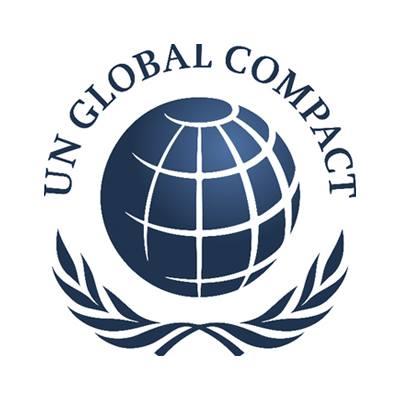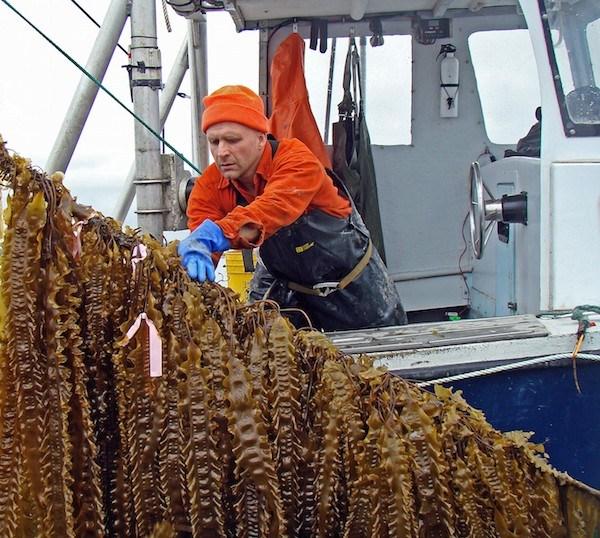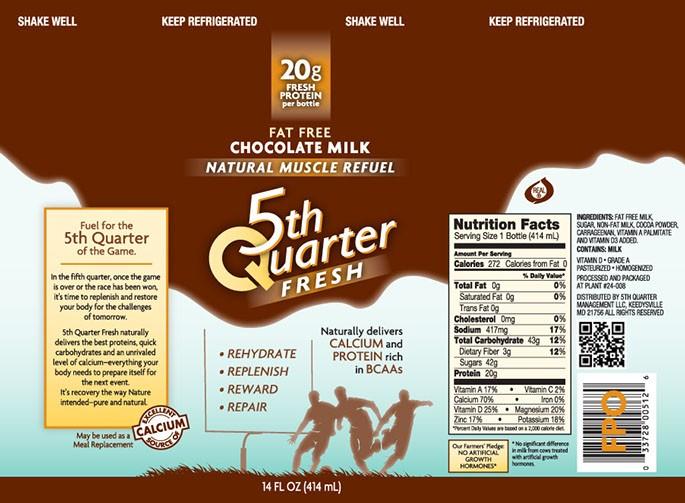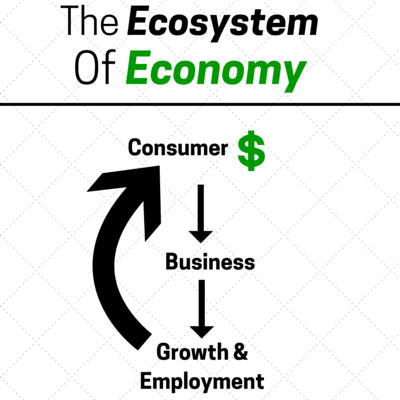Healthcare Initiative is Changing the Way Hospitals Do Business


By Brooke Nally
It shouldn’t be surprising that an industry founded on the tenet of “do no harm” is seeking ways to become more sustainable. The Healthier Hospitals Initiative (HHI) is a national call for health systems to improve patient care and cut costs by changing the way they approach healthcare — from hospital design to daily operations.
The movement does more than give lip service to environmental concerns and improved outcomes, however. The HHI uses evidence-based research and real data about the correlation between community health and sustainability to help facilities move from simply having good ideas to implementing changes that positively impact individual patients and entire communities.
Big blayers lead the charge
Twelve of the nation’s most influential health systems worked with Practice Greenhealth, the Center for Health Design and Health Care Without Harm (HCWH) to gather data and develop the HHI’s guidelines. More than 500 hospitals, representing over $20 billion in purchasing power, came together with the united purpose of making the American healthcare system more sustainable.
Those 12 founding health systems brought more than 1,200 enrollees to the table and provided a vast amount of data that helped move HHI from theory to practice. The result is a focused, detailed framework that can be fully implemented in any healthcare organization, no matter how large or small.
Key focus areas define and guide HHI practices
Environmental change doesn’t happen overnight, nor does it come with one easy panacea, so the HHI uses a multi-pronged approach to address this complex problem. The program identifies six key focus areas -- engaged leadership, healthier foods, leaner energy, less waste, safer chemicals, and smarter purchasing — and provides step-by-step tiered challenges to help facilities make progress toward sustainability and overall community health.
These focus areas guide hospitals and other health organizations that seek to improve care and save money. And in the terms of the HHI’s goals, few areas offer as much room for progress and development as the leaner energy initiative.
Because hospitals operate life-saving equipment that requires uninterrupted power, healthcare facilities use a disproportionate amount of energy, with costs that exceed $10 billion annually. Recent research estimates that energy and waste interventions could save more than $5 billion over the first five years and as much as $15 billion over 10 years. Those savings add up to a big impact on overall healthcare costs.
Broad changes that deliver individual results
It might be easy to grasp the impact to the bottom line for an individual hospital, but it’s more difficult to see how large-scale changes make a difference to the end-user — in this case, the patient. The HHI speaks to that need by addressing consumer health concerns on two major fronts: the environmental impact on long-term health and the operating costs that are passed on to the patient.
Chronic diseases that require lifetime treatment and symptom management account for approximately 86 percent of all healthcare expenses. Environmental factors like pollution and emissions contribute to the epidemic of chronic disease afflicting the population.
Ironically, hospitals are one of the biggest offenders when it comes to pollution — the healthcare industry’s carbon footprint accounted for nearly a tenth of the country’s carbon emissions upon last measurement. Given that conditions like asthma and chronic bronchitis are aggravated by carbon dioxide and other pollutants, healthcare facilities have unwittingly added to the very problems they work to treat.
The HHI aims to help facilities benchmark their energy use, which will help reduce the production of harmful emissions and their impact on patients and local communities. That increased sustainability will have the twofold effect of lessening environmentally influenced disease — thus lowering the need for expensive long-term care — and helping to reduce hospital overhead costs, allowing hospital managers to pass some savings on to their patients.
The challenges of changing a mindset
Despite some of the clear benefits of making healthy changes for both hospitals and those they serve, movement away from a set of traditional standards and practices won’t be easy for everyone. Each of the HHI initiatives will require hospital-wide adjustments, including efforts to plan and enforce the transition. And while the long-term cost savings could be substantial, the initial investment required to become truly sustainable may seem prohibitive for smaller hospitals.
As more health systems commit to change, whether it’s swapping out lights for bulbs that use less energy, redesigning more efficient HVAC systems, or installing solar panels, the effects will reinforce the universal benefits of the initiative and make things easier for small, independent facilities. However, that puts a lot of pressure on those organizations paving the way to sustain a critical mass of responsibility and engagement. At this point, only time will tell if the trend will gain the needed momentum to make a lasting change in the industry.
From waste production and energy use to inventory management and chemical purchasing, the HHI has identified several places where hospitals can change their environmental impact. In the coming years, the American public can only hope that those changes will start a domino effect, helping facilities provide better patient care, reduce healthcare costs, and curb practices that contribute to chronic disease in their communities.
Image credit: Pixabay
Based out of Salt Lake City, Utah, Brooke is the content coordinator for SolarPowerAuthority. She is a solar expert with a love for all things eco, including smart green design, hydroponic grow systems, green business initiatives, and sustainable living off the grid. You can contact her via Twitter; @brookenally.
How BPO Companies Affect Change


By Susana Vigaray
In the last couple of decades, we’ve seen that corporate social responsibility, or CSR, has become an important part of top companies’ strategies. Consumer studies show that there is an expectation that companies will participate in CSR initiatives. According to findings from the 2015 Cone Communications/Ebiquity Global CSR Study, 9 in 10 consumers expect companies to do more than make a profit, but also to operate responsibly to address social and environmental issues.
It is no different in the Business Process Outsourcing (BPO) industry. In developing countries -- such as India or the Philippines, two favorite offshore outsourcing destinations for the Fortune 500 -- the BPO industry has a significant impact on the local economy. For example, in India, the industry represents 9.5 percent of the GDP (gross domestic product) and employs 3.5 million people. Hence, there is an even greater expectation placed on the BPO companies in these nations.
Being a big industry in these emerging economies has positive aspects for CSR: It can deliver positive social outcomes not only in local communities, but also for a whole country. Job generation is one of the ways that the BPO industry can directly impact these communities. The other way is by conducting a socially responsible business.
And in order to help companies around the globe engage in socially-responsible business practices, the United Nations launched in 2000 the Global Compact, a voluntary initiative which helps corporations to better align business strategies and operations with universal principles on human rights, labor, environment and anti-corruption.
The Global Compact provides guidelines for responsible practices -- the Ten Principles -- that can be easily implemented by any company, regardless of its size. More than 8,000 companies worldwide are participants of the Global Compact, and every year many other top companies join this initiative. It is a genuine attempt to encourage corporations that have considerable influence in their markets to integrate the principles into their strategy in an effort to move cooperatively towards responsible business practices, which is the case for the BPO industry in some developing countries.
My company, Sitel, a leading company in the BPO industry, recently embraced the Global Compact principles in the 21 countries and more than 100 communities where it operates. Sitel engages local employees, communities, clients and develops partnerships that results in meaningful social changes. Community development and the fair treatment of employees can positively impact on retention and quality of services - two well-known problems of the BPO industry. One of Sitel’s initiatives to support community development is called Sitel Footprints, in which the company helps surrounding communities by investing in local programs that support education and employment readiness. Examples include language skills for newcomers to the job market and the underemployed and also investing in schools for orphanages in Latin America.
BPO companies are also increasingly mobilizing and encouraging employees to volunteer in their local communities. It gives the employees a sense of purpose and engagement in a cause that they find meaningful, and also demonstrates that the companies care and are looking beyond profitability.
But probably the most important aspect of it is that the companies can affect change and have a positive and lasting impact on society. It’s a fair way to repay the society that allowed the BPO industry to thrive.
Susana Vigaray is Assistant General Counsel at Sitel, and has been recently appointed as Global Corporate Social Responsibility Director. She is a passionate and enthusiastic lawyer who has worked in New York, Paris and Madrid, her home town, and where she is currently based.
Ecology and Economics: Oikos 101


By Kyle G. Crider
“We are rapidly building a world in which the questions of health and peace and prosperity sooner or later will be moot because we will have crippled the very engine of life that makes it all possible... The economy is a wholly-owned subsidiary of the environment. All economic activity is dependent upon the environment with its underlying resource base. When the environment is finally forced to file under Chapter 11 because its resource base has been polluted, drained, cut down, dissipated, and irretrievably compromised, the economy goes down to bankruptcy with it. The economy, in reality, is just a subset of the ecological system.” -- Gaylord Nelson, “The Bankruptcy Files” (Wilderness, Summer, 1994.)
What do ecology and economics have in common? A great deal, as it turns out, including the same Greek root for eco-, oikos. According to Wikipedia, oikos “refers to three related but distinct concepts: the family, the family’s property, and the house.” In other words, both ecology and economics deal with good housekeeping, budgeting, and family planning. Only the house is the whole planet, the budget is one of natural capital, and the family is every species that shares the globe.
Good Oikos-keeping: Imagine astronauts on a spaceship. What if only 1 percent of the astronauts controlled almost half of the spaceship, including all the largest and best cabins, exercise areas, and supply stores? What if 80 percent of the crew was forced to try to survive on less than 10 percent of the ship’s supplies? What we would not tolerate on a spaceship, we live every day in America. (Indeed, some economists argue that the top 0.10 percent in U.S. have almost as much wealth as bottom 90 percent, and many believe this inequality is growing.)
“There are no passengers on spaceship earth. We are all crew.” -- Marshall McLuhanOikos budgeting: In previous articles for TriplePundit, I discussed the need for living sustainably, i.e., within nature’s limits, and bemoaned the fact that those most often calling for balancing fiscal budgets are the same ones wantonly drawing down irreplaceable natural capital, treating the Earth like a business in liquidation.
“Only when the last tree has died and the last river been poisoned and the last fish been caught will we realize we cannot eat money.” -- Native American sayingOikos family planning: As many have noted, we are in the midst of a sixth mass extinction. There are many reasons for this extinction, but one root cause: a single species, Homo sapiens. (It is somewhat ironic, of course, that our Latin name translates as “wise person.”) Like a cancer, our single species is estimated to consume 19 percent of the planet’s total net primary productivity (NPP), or a whopping 31 percent of the terrestrial and 2 percent of the marine NPP — and estimates range as high as 55 percent total NPP.
Furthermore, as reported by The Guardian, wildlife “is being pushed into an ever smaller area of the Earth, with just 25 percent of ice-free land considered wild now compared to 50 percent three centuries ago.”
If things are this bad with 7 billion humans consuming the earth’s productivity and reducing its biodiversity, how bad will things be when our population peaks at 9 billion or even 10 billion hungry folks? But population growth is not the same all over: “A child born in the United States will create thirteen times as much ecological damage over the course of his or her lifetime than a child born in Brazil,” reports Scientific American.
If all this seems a bit overwhelming, there is a shared road ahead. I would recommend starting with this inspiring TED Talk by Hans Rosling, Global population growth, box by box.
[embed]https://www.ted.com/talks/hans_rosling_on_global_population_growth?language=en[/embed]
But back to the economics part of oikos: My new favorite site is Evonomics (“The Next Evolution of Economics”). And, in keeping with the title of my own article, here is Evonomics’ Earth to Economics: Welcome to Science 101.
“The main reason that the so-called orthodox school of economics achieved its dominance is because it seemed to offer a grand unifying theoretical framework. Too bad that its assumptions were absurd and little effort was made to test its empirical predictions.” -- David Sloan Wilson
P.S. If you like that one, try Denise Cummins’ What Ayn Rand Got Wrong About Human Nature and Free Markets, too.
Image credit: Pixabay
Kyle G. Crider is Energy Project Manager for the Alabama Environmental Council and the Alabama Solar Knowledge project. Kyle holds a bachelors in Environmental Studies and a Master of Public Administration (MPA) degree with a double-emphasis in Urban Planning & Policy Analysis. He is a Leadership in Energy and Environmental Design Accredited Professional, Neighborhood Development (LEED AP ND).
Legal Petition Seeks to Stop All New Offshore Drilling


A wide group of organizations are calling on President Barack Obama to immediately halt the issuance of any new offshore drilling licenses. Such licenses, they fear, would put America on a dirty, fossil-fuel path for the next 40 to 70 years – the normal lifetime of a lease – and continue our oil addiction, putting the world at risk of catastrophic climate change.
The legal petition has the support of 45 climate, conservation and indigenous organizations that represent communities all across the country. I've worked in the nonprofit world, and I can tell you that getting a handful of organizations together on a campaign is tough. Forty-five? That's historic. And if they succeed, nearly 1 billion acres of America's coastline would be secure from drilling, keeping a lot of oil in the ground.
The good news is that President Obama is, slowly, moving in the right direction. He recently banned most new coal mines on federal lands and banned offshore drilling on the Atlantic Coast, both of which were historic decisions that will have positive impact on America's energy future. He also, late last year, canceled Shell's Arctic oil lease, essentially putting a big chunk of the Arctic off the table for the foreseeable future.
“President Obama recognized oil drilling off the Atlantic Coast was a bad idea. But the same logic — that we must protect our climate, wildlife and coastal communities from oil spills and carbon emissions — holds true for all ocean coasts,” said Miyo Sakashita, oceans program director at the Center for Biological Diversity, one of the supporters of the legal petition, in a press statement.
In fact, Obama's presidency also oversaw one of the biggest expansions in oil drilling in history (though recent oil prices have tapered that down). This is despite seeing, over the past seven years, the disastrous BP Deepwater Horizon oil spill in the Gulf of Mexico and the Refugio Oil Spill off California, both of which are still impacting the environment today. The truth is: We're still drilling too much, in too many places, and any expansion of land available to lease could be disastrous.
“These risks are compounded by the devastating and long-lasting effects of climate change on our coastlines, communities, wildlife and public health,” said Linda Krop, chief counsel of the Environmental Defense Center, another petition signatory, in a statement.
President Obama has staked his legacy partly on climate, and he will, in the coming weeks, officially sign the United States onto the Paris Agreement that mandates massive cuts in CO2 emissions. He won't be able to get Congress to act on climate, but he does have the power to -- unilaterally, through an executive order -- stop all new offshore oil drilling, which would be a powerful step in the right direction. Let's hope he listens and helps further his legacy as the president who helped America break its fossil-fuel addiction and become a clean-energy economy.
Image credit: Chad Teer via Wikimedia
The Gift and the Curse of Economic Globalization


In 2016, the global community finds itself on the brink of great and terrible changes. Great and terrible for the same reasons, because after this point, life as we know it could be fundamentally different.
The word on everybody’s lips is globalization. It’s the reason the Trans-Pacific Partnership has emerged as one of the most divisive — and potentially disastrous — trade agreements in the modern history of the United States. Globalization also has a habit of being spoken in the same breath as the word authoritarianism.
But while a certain golden-haired businessman and presidential hopeful might get some of the credit for hastening authoritarianism here in the States, the truth is that it’s been thriving for a great deal longer than his tilt at the presidency.
No. Multinational corporations are the face of both globalization and authoritarianism. They rule over our lives more completely than any U.S. president ever could.
What globalization is supposed to look like
It’s not all bad, of course. The realization that we’re a part of a larger, global economy has led to the democratization of our responses to threats, such as staving off catastrophic climate change and doing battle with the Islamic State. History will tell us decades from now which of these two threats posed an existential threat to the United States’ hegemony and which did not, but for the time being, they both function as rallying issues for both sides of America’s deep partisan divide.
What does the democratization of the world’s threat-response look like? It looks like the nearly 200-nation commitment to climate change action that was signed last year in Paris. It looks like the multinational coalition built in the Middle East to put the Islamic State in its place.
In short, it looks like the nations of the world are having a watershed moment -- coming together in common cause at the moment we need it most.
Unfortunately, non-state actors are also sensing the winds of opportunity. As the nations of the world become ever-more entwined and interconnected, multinational corporations have seen fit to write agreements behind closed doors that would grant them power that eclipses the sovereign governments of the world’s developed countries.
In other words, two steps forward, one giant step back.
The Trans-Pacific Partnership
If the Trans-Pacific Partnership (TPP) is not yet a household name, it soon will be, as excitement — and fatigue — over our ongoing presidential election reaches a crescendo this summer. Unlikely as it seems, democratic candidate Sen. Bernie Sanders — the standard bearer for true American progressivism — has one thing in common with Donald Trump. They both agree that multinational trade deals have been a disaster for the average American and grant too much power to corporations.
Pick up any random object in your house. It could be a shoe, a frying pan or a set of kitchen cutlery. There’s an extremely good chance most or all of these objects bear a label that reads Made in China or Made in Vietnam. Even the chocolate in your Nestle bar comes from farms thousands of miles away from your home — and may even have been cultivated by child slaves, if recent allegations prove true.
It wasn’t always this way — so what happened?
Trade deals happened. Lots of them — from NAFTA and CAFTA to the normalization of trade relations with China. Each of these agreements made it legally, but not morally, defensible to shut down factories on American soil and move them to countries with lower or non-existent minimum wages, in order to cut costs and maximize profit.
Retail juggernaut Walmart has been exploiting this type of trade agreement for a very long time — and it’s hardly alone.
The point is: Globalization has introduced the potential for American workers, who rightly expect a living wage in the year 2016, to be forced to compete with workers in foreign, developing countries — workers who are paid, in some cases, just pennies a day for long hours of backbreaking labor. The so-called ideal of unfettered “free trade” has turned out to be an unmitigated disaster.
The squandered opportunity of globalization
And this reveals a disturbing paradox: Multinational corporations are becoming harder — not easier — to regulate as globalization takes hold. This is a gigantic problem, and it threatens to destroy the already precarious balance of power in the world today.
Language in the Trans-Pacific Partnership would make it possible for multinational corporations to sue the governments of participating nations if those nations attempt to pass laws that would threaten that company’s revenue. The TPP would also dramatically lengthen the time it takes for creative works to enter the public domain, and would make it increasingly difficult for citizens of the world to buy pharmaceuticals at prices that won’t drive them into bankruptcy.
At a time when it’s more important than ever for the world’s governments to stand together in solidarity and in support of average citizens everywhere, we find instead that the power of assembly itself is under assault by entities that answer -- first, foremost and, in some cases, exclusively -- to the pursuit of profit.
Politically-savvy right-wingers have their constituents jumping at the ghost of governmental authoritarianism, but the truth is: Oppression of that scale is already happening — and it begins in corporate board rooms. And for what? So that the U.S. economy can inch ever closer to yet another recession?
Missed opportunities
Globalization should have been a golden opportunity to strive for oneness — or at least a common global cause. Instead, it hangs now like a threat over all of the progress the global economy has made over the last several generations.
There’s no simple solution to this problem. It certainly goes beyond voting for a particular U.S. presidential candidate, although in my opinion a vote for true progressivism is always a step in the right direction. The truth is more complicated, and it demands more of us than just one vote every four years.
It requires us to acknowledge that the people of the world have never had less control over their destinies than they do today. This includes the unemployed factory worker in the United States’ Rust Belt, and it includes the underage cocoa farmer on the Ivory Coast.
Globalization is an opportunity as well as a threat to both of these people. We just have to decide which we’d like it to be.
Image via: IM Creator/ Mugley
How 3-D Ocean Farming Can Save the Seas


With the constant news about overfishing, ongoing acidification and the garbage cluttering the world’s oceans, the outcome for the world’s marine environment certainly looks bleak.
The aquaculture industry insists that farmed fish can help address this problem. But critics point out that a monoculture at sea poses analogous challenges to what is occurring with big agriculture on land. Ideas for cleaning up the oceans are certainly interesting and could spur more innovation, but these efforts are akin to taking a butter knife into a gun fight.
But what about using the ocean to harvest not only seafood, but plants at well?
Bren Smith is one such advocate. Originally from Newfoundland, Smith witnessed overfishing when he first started working within the fishing industry as a teenager. He took some interest in aquaculture, but as he explained in a recent article, he became dismayed as he saw fish treated almost the same way farm animals are on land. Eventually, Smith joined a program to attract fishermen to Long Island and became an oysterman. He witnessed the effects of climate change as lobster moved north to seek the cold water in which they thrive. Then Hurricanes Irene and Sandy hit.
Nevertheless, out of the mud that damaged the 100 acres he had leased, Smith found another economic opportunity. Inspired in part by University of Connecticut research, he shifted away from culling oysters from the seabed and is now recognized as a leader in 3-D ocean farming. In just a few short years, he won several awards and has been showcased on many of the world’s largest media outlets.
For Smith, his 20-acre farm is not just about producing seafood more sustainably. 3-D farming is part of a movement that seeks to move the world toward more of a plant-based diet to accommodate the 9 billion people expected on Earth by 2050 and to develop far more healthful eating habits. While we are regaled by the virtue of eating alternative grains and kale — and in addition, the United Nations has declared 2016 The Year of Pulses (beans and lentils) -- sea-based plants are plentiful and full of nutrients.
The U.N. Food and Agricultural Organization (FAO) has identified at least eight varieties of seaweed that are scalable, sustainable and jam-packed with nutrients. Porphyra, known as nori in Japan, has a protein content of up to 50 percent and is rich in vitamins A and C, niacin, and folic acid. Dulse, or “sea parsley,” is high in iron and, according to the FAO, has more vitamins than spinach. Gracilaria, a red seaweed, is loaded with antioxidants. The challenge for the nascent seaweed industry, however, is to demonstrate that these marine plants can be used in more dishes than in sushi and Korean soups.
Smith’s business is one step closer to changing how the world could eat. His farm resembles an underwater hanging garden, with varietals of seaweed growing horizontally and alternating with nets containing mussels and scallops. Under the garlands of seaweed, cages home to oysters sit on the sea floor, while clams are buried under a thin layer of mud. The total acreage is a fifth of what Smith used when he was only harvesting oysters pre-Hurricane Sandy.
And unlike aquaculture ponds, these 3-D farms are almost invisible, therefore hardly altering the local landscape. Smith insists they are also highly efficient: One acre of a farm like Smith’s can generate as much as 25 tons of greens and 250,000 shellfish in five months.
Now, Smith is working with chefs on ideas for dishes that move endangered wild fish away from the center of the plate — just as nutritionists insist our meals should be loaded with vegetables, with meat as a small side, not the main staple.
But this is more than feeding people in a new way. Smith touts a variety of environmental benefits: seaweed shows promise as a potential new source of biofuels; areas hosting bivalves such as oyster beds can act as a carbon sink and filter out nitrogen, which is responsible for “dead zones in our oceans;" and these farms could work as natural reefs and levees, helping to reduce the damage from rising sea levels and storm surges.
With increasing drought, constant encroachment on farmland and growing awareness about the meat industry’s impact on the planet means we may need to shift to the oceans — just at a time when our seas, too, are becoming more fragile. But if we can find a new way to feed people, bolster public health, create jobs and repair our world’s marine life, the work of visionaries such as Bren Smith could be seen as a turning point in how we manage our world's oceans.
Image credits: Bren Smith
You Write the Headlines in This Interactive Journalism Model


What if you could decide which questions to ask presidential candidates during debates? What if you could write the headlines for the day's news stories? Would you ask politicians about climate change or write a front-page story about endangered species? Think fast, because now you can do just that. At least in theory.
A company called Hearken (which means “to listen”) has created a new model of journalism that loops in the reader like never before. This innovative and elegant solution was recently presented at the SXSW Social Good Hub. The model flips the traditional process of reporting on its head. Instead of journalists coming up with stories, the readers do. It’s essentially crowdsourcing news story ideas.
The story development works like this. First, readers submit topics for news stories. Next, those ideas are voted on. Finally, journalists take the most popular story suggestions, do the research and write the story. Then voilà! A story is published that people are eager to read.
Everyone wins. Journalists win because they spend less time brainstorming ideas they hope people might care about (fingers-crossed). Instead, writers spend more time researching the suggested topics and create higher-quality stories that perform better.
Readers also win because they have a voice in determining what the news of the day is and get to read about topics that interest them the most. The news process becomes democratic and takes a human-centered design approach. The concept is similar to crowdfunding platforms through which potential products are showcased and people vote with their money to show how interested they are before the product is even fully developed or available for purchase.
Media companies also benefit from this journalism model because they get more clicks, which increases their revenue potential from sponsors and advertisements. It’s a win-win-win.
Of course, this is only one tool in a journalist’s toolbox. There will, of course, be instances when investigative journalists need to report on things the public doesn’t know about, such as the Panama Papers. Or, when an unpopular story needs to run because it’s the right thing to do. After all, the media is supposed to be a watchdog.
But it’s easy to see how this model could make the world a better place. If the next presidential debate moderator used this tool, important issues such as climate change could potentially receive much more attention and ridiculous topics such as political candidates’ Super Bowl predictions might disappear.
According to a report from Media Matters, debate moderators have asked zero climate change questions to GOP front-runners Donald Trump and Ted Cruz. Additionally, only 1.5 percent (22 out of 1,477) of all debate questions have been about climate change. In almost half (9 out of 20 debates), moderators haven’t said a peep about climate change. That's incredibly disappointing and out of touch, especially given the recent climate change talks in Paris, where leaders from around the world discussed for days the immediate threat of climate change.
If politicians implemented the platform into their websites, they could easily tell which topics and questions are the most important to their supporters and tailor their talking points to speak on issues that you and your peers care the most about. All the guesswork about what matters to people would disappear. The people who ask candidates questions shape the political conversation, and political conversations shape the world we live in. If you get to ask the questions and write the headlines, you get to change the world.
Image credits: 1) Joshua Earle via Unsplash, 2) Hearken, 3) Media Matters (used with permission), 4) Ales Krivec via Unsplash
Policy Points: How to Make Businesses Family-Friendly, One State at a Time


By Zach Bernstein
With the presidential election only months away, Congress is expected to slow down even more than usual. And states may step up to fill the gap. That seems to be happening with the minimum wage, which picked up two state wins recently, and family-friendly policies such as paid time off to care for family members.
New York recently became the latest state to pass paid family and medical leave insurance. It follows Rhode Island, New Jersey and California, which already have paid leave policies in place. And New York’s law is much stronger, providing up to 12 weeks, while California and New Jersey provide six weeks paid time off and Rhode Island provides only four weeks.
In addition, 18 more states are at various stages of considering paid leave, including Washington state, where a program is merely waiting for funding.
The landscape on good workplace issues like these is changing rapidly. And now with New York, progress on the national level has a potential boost.
If it can make it there...
For New York Gov. Andrew Cuomo, the issue of paid leave is personal. He had to care for his father, former New York Gov. Mario Cuomo, before his passing last year. “I have kicked myself every day that I didn’t spend more time with my father at that end period,” he explained. “I could have – I’m lucky, I could have taken off of work.” At the same time, he noted, a lot of people in the Empire State do not have that choice.
That’s because the United States remains the only developed nation, and one of only a handful worldwide, not to guarantee paid time off for new parents or employees facing family emergencies. Federal law, the Family Medical Leave Act, guarantees leave in some cases – but it’s unpaid, and only covers part of the workforce.
That’s what New York’s plan fixes. It allows workers to take paid time off to care for family members or following childbirth, and be paid up to $633 a week when fully phased in. This leave would be funded entirely through employee payroll contributions – think: deductions for Social Security and Medicare – starting at 45 cents a week in the first year. So, no costs to employers. And while the bill would only cover about 35 percent of a worker’s salary at first, once the fund is built up more over time, that amount is slated to rise.
In some ways, New York was already ahead of the curve. It's one of only five states – including the three with full paid family leave programs – to offer Temporary Disability Insurance (TDI), which offers partial wage replacement and which Gov. Cuomo’s paid leave program builds on. But TDI does not cover family leave, and the benefits are smaller – too small to meet the cost of living in the state. The new paid leave system is designed to change that.
Mind your business
Despite all of this, some elements in the business community are claiming paid leave is going to burden businesses. As is often the case, groups that claim to represent business are taking the exact opposite position from more and more companies.
Two of the states that have already paid leave – California and New York’s neighbors in New Jersey – have heard mostly good things from businesses. The vast majority of California businesses reported that, when it comes to issues like productivity, profitability and employee morale, their paid leave law either helped or had no meaningful effect either way. And small businesses were the least likely of all to report ill effects.
Next door in the Garden State, meanwhile, a smaller-scale survey found that the paid leave law didn’t affect most companies’ finances at all – but even in two cases where it did, the companies said it was still worth it.
There’s a reason for that. Offering paid leave helps businesses attract and retain good talent – and as any business owner can tell you, one of the biggest costs they can face is when employees leave looking for work at places with better benefits. By some estimates, those costs can range from $3,328 to replace a retail worker earning $10 an hour to a staggering $213,000 to replace an executive earning $100,000 -- a 213 percent increase.
And that’s before you look at some of the more intangible benefits, like a worker who comes back refreshed and happy after having several weeks to bond with a newborn, or an employee who doesn’t have to worry about an ill family member while they’re supposed to be focused on work. Having people who can focus on their work instead of their home lives is nothing but good news for businesses concerned about the bottom line.
Frank Garcia, chair of the National Association of Latino State Chambers of Commerce, said in response to Gov. Cuomo’s plan: “Many of our businesses already provide paid leave programs because they understand the importance and value of taking care of their employees.”
Making it national
Gov. Cuomo isn’t the only New York policymaker to take a strong stand on paid leave: Last year in the U.S. Congress, Sen. Kirsten Gillibrand of New York re-introduced the FAMILY Act, a bill which is based on California and New Jersey’s programs and which would bring the United States in line with the rest of the world. It’s already received strong support from groups like the American Sustainable Business Council, and businesses like Eileen Fisher. Business people can show their support here.
But with Congress looking set to all but close up shop for the year, it’s in the states that the business voice is most crucial now. Family Values @ Work has a good list of active campaigns to support.
With any luck, the next Congress will come to Washington next year and find that more states are asking, “What’s taking you so long?”
Image credit: Pixabay
Zach Bernstein is Manager of Research and Social Media for the American Sustainable Business Council.
No, Chocolate Milk Doesn’t Help with Concussions After all


If you love science, and celebrate its resurgence with Facebook pages like this one and the number of initiatives to promote STEM (science, technology, engineering and mathematics) education, much of the nonsense out there about health and fitness can be frustrating.
Avoiding gluten even if one does not have celiac disease, insisting on shopping only at Whole Foods, and of course the on-again, thankfully now off-again, anti-vaccine movement are just a few examples of how some life choices are made by cherry-picking beliefs and without any guidance from science. Nevertheless, bringing up scientific research while asking why someone indulges in oil pulling or insists all soy is evil often prompts this reaction: “Well, so much research is funded by corporations, so why should I believe it?”
Case in point: a research fiasco at the University of Maryland College Park, which finally ended last week when the university’s administration returned over $228,000 in funds. The cash contributed to a study that claimed a brand of chocolate milk alleviated the health effects of concussions.
The snickering began last fall when Jae Kun Shim, an associate professor of kinesiology at the University of Maryland’s School of Public Health, authored a study that compared the cognitive and motor functions of high-school football players over the course of a season. The subjects were regularly given servings of chocolate milk made by Fifth Quarter Brands, which apparently sources its milk from “super, natural” cows that crank out milk with 40 percent more calcium, as well as far more electrolytes and calcium than regular milk. In a marketing campaign that would most likely earn a failing grade in any undergraduate business school course, Fifth Quarter Brands insists that the milk from these “best cows” has the “highest quality standards” and is then pasteurized “without exposing the milk to ultra-high temperatures.”
And “just as nature intended,” this milk -- which study participants often consumed as often as six times a week -- helped both concussed and non-concussed football players score better on an array of cognitive scores than the control group, which was not exposed to the Fifth Quarter drink, the study concluded.
The reason: “Branched chain amino acids (BCAAs) are important for energy metabolism and neurotransmitter synthesis in the brain,” Professor Shim said in a university press release.
It sounds impressive, but shortly after the press release about the study was issued last December, many commentators did not smell chocolate or a super-charged cow, but smelled a rat instead.
Considering the ongoing controversy over the long-term health effects of concussions on all football players, from high-school to college to the NFL, many observers were appalled that the university could hype such a study covering such a sensitive subject. Meanwhile, schools were stocking up on the coveted chocolate milk, creating a rapid cash cow (ahem) for Fifth Quarter Brands. During this saga, one basic fact triggered many an eye-roll: One serving of this milk product contains more sugar than a 12-ounce can of cola.
Then, the news became even worse: As health writer Andrew Holtz found out when communicating with the university’s press office, there was not a published study to be found in any academic journal. So why on earth, many kept asking, was one of the nation’s largest public universities behaving like a public-relations lackey for the dairy industry, or in the case of Fifth Quarter Brands, some obscure marketing company? No other brand of chocolate milk was mentioned, and the university kept stonewalling when Holtz and other writers asked for additional information. It turned out that approximately $200,000 of the study's funding came from trade organizations representing the dairy industry, including the Allied Milk Foundation; the other $29,000 was from Fifth Quarter Brands.
Fittingly, on April Fool’s Day, the University of Maryland disavowed the study, removed any evidence of the research from its website, and said it would return all funds earmarked for the project. An internal study declared that Professor Shim’s “failure to declare gifts from the Allied Milk Foundation as a conflict of interest violates university regulations.”
The outcome? More training for professors so that they understand what “Responsible Conduct of Research” means, and another embarrassment for higher education, already troubled by skyrocketing tuition prices, bloated administrative costs and constant athletic department scandals.
Image credit: Fifth Quarter Brands
Supporting Local Economies Supports the Nation


By Sarah Sanders
The basic economy works the same wherever you go: People spend money. The businesses that receive that revenue can expand and employ more people. Those newly-employed people then have more money to spend back into that economy, which further builds these businesses and continues the circle.
The question is: Which economy are we choosing to build? We have two choices: Circulate that money and growth inside or outside of our communities.
Circulating our business locally means more people will be employed in our communities. It means local businesses will be less fearful of expanding, and new business ventures may form as a result of the positive environment for growth. This can then impact the national economy as communities expand and support each other.
Ignoring local businesses, and sending our money solely to a national or international business, breaks that chain of growth and supports the monopoly of big businesses that can potentially minimize local growth and leave our communities stagnant. This gives people in other states or other countries the employment and economic growth that we should be seeing in our local area, and leaves our nation with a broken network of failing cities and economies.
For example, the Edmonton Social Planning Council said that the trend of the local economy was not looking too good in Edmonton, Alberta, Canada, at the end of last year, Canadian publication CBC News reported. The council, which releases a Tracking the Trends report every two years, concluded:
- The number of Edmontonians receiving employment insurance benefits was up 55 percent in the first eight months of 2015, compared to the year before;
- The number of Edmonton households receiving social assistance benefits was up 9.1 percent in the first nine months of 2015, compared to the 2014 average;
- 14,794 people were served by Edmonton's Food Bank in March 2015, an increase of 15.4 percent compared to a year earlier;
- 128,810 people in metro Edmonton lived in poverty in 2013, 10.5 percent of the population.
The nation cannot grow and succeed if the communities within are struggling. In an emergency on an airplane, you are told to always put on your own oxygen mask first, before you help those around you. If you can’t even survive yourself, you can’t expect to help anybody else. This holds true as well with local and national economies.
You cannot work backward. By supporting local business, we keep our communities from starving economically, and we support new ideas and local business decisions. Our local businessmen and businesswomen know what works and what is needed in our community. Giving our support to them is crucial to encouraging diversity and new ideas that can then spread to a national level when they are ready to grow.
Keep our communities alive and thriving, and give people a chance to work and support each other. Support local economies.
Graphic courtesy of the author.
Sarah Sanders is a full-time student, wife, and soon-to-be mother. She is a representative for garage storage and organization companies local to Edmonton, AB called Wicked Workshops Inc. and Inline Solutions, who support local businesses and the local economy.